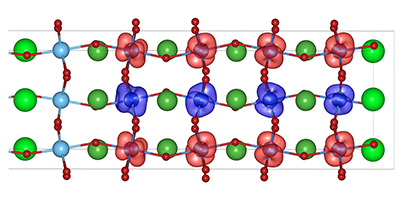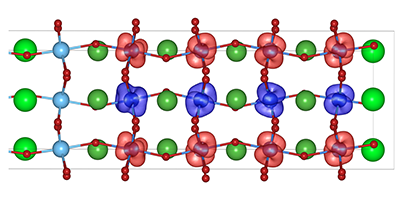Building Better Solar Cells, Layer by Layer
Oxides of transition metals (elements of the d- and f-blocks of the periodic table) exhibit a remarkable variety of electrical, optical, and magnetic properties. Thanks to recent advances in fabrication technologies, these oxides can now be combined in layered thin-film structures (heterostructures), providing materials scientists with a wide array of options for assembling devices with tailored functionalities. Writing in Physical Review Letters, Elias Assmann at the Vienna University of Technology, Austria, and colleagues report calculations that show heterostructures of transition-metal oxides may be used to build a new class of highly efficient solar cells.
The authors consider a structure consisting of alternating layers of lanthanum vanadate ( ) and strontium titanate ( ) and apply density-functional theory to describe its photovoltaic behavior; namely, how electron-hole pairs are photogenerated, swept away by an electric field, and transferred via contacts to an external circuit. They predict several features that would make these structures potentially more efficient than existing photovoltaic materials. First, these oxides have a direct band gap, so light is absorbed more strongly than in conventional silicon cells, requiring a much thinner layer of active material. Second, the materials combination can be used to engineer a so-called graded band gap, yielding an absorption spectrum that fully matches the solar spectrum. But the most innovative aspect of their scheme derives from the fact that and have different electrical polarities: at the interface between the two, an internal electric field arises that can quickly separate and extract the photogenerated electron-hole pairs before they recombine.
Practical challenges, such as demonstrating a commercially viable fabrication scheme, would have to be overcome, but Assmann et al.’s design may offer more versatility than other emerging alternatives to silicon. – Matteo Rini





